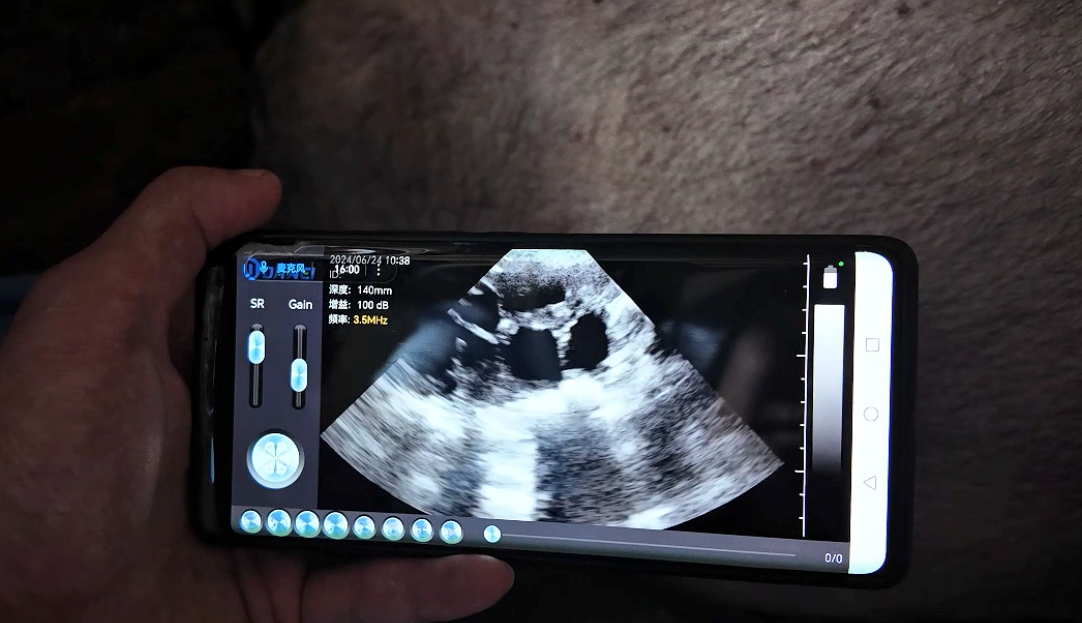In modern pig farming, batch management has become an essential approach to improving production efficiency and reducing costs. Batch management means organizing breeding, farrowing, and weaning of sows at fixed times, thereby standardizing the production process. To make this model work smoothly, it is crucial to accurately monitor follicle development and pregnancy status in sows—this is exactly where come into play.
1. Follicle Detection: Identifying the Optimal Breeding Time
The signs of estrus in sows are sometimes not obvious, and relying solely on behavior observation may lead to misjudgment. By using ultrasound, the morphology of follicles on the ovaries can be clearly observed:
-
Follicle imaging characteristics: appear as black fluid-filled areas with clear boundaries, gradually enlarging as the estrous cycle progresses;
-
Approaching ovulation: when the follicle diameter reaches 6–8 mm and the follicle wall becomes thinner, this is the best time for breeding;
-
Abnormal conditions: if follicles remain unruptured for a long time or cysts appear, ultrasound can promptly identify them and guide intervention.
Through follicle detection, pig farms can scientifically determine the timing of insemination, significantly improve conception rates, and avoid returns to estrus caused by missed ovulation.
2. Pregnancy Detection: Early Identification, Early Planning
Around 25 days after insemination, ultrasound can determine pregnancy through the presence of uterine fluid-filled areas and embryonic heartbeats.
-
Early detection of non-pregnancy: allows timely rebreeding, preventing the waste of a reproductive cycle;
-
Fetus monitoring: in some sows, the number of embryos can be observed, helping with nutritional management;
-
Miscarriage detection: abnormalities during early or mid-pregnancy can be identified for timely treatment.
Compared with traditional methods, ultrasound detection is more direct and accurate, providing reliable support for batch management in pig farms.
3. Value in Batch Management
-
Synchronized breeding and farrowing
Follicle detection helps determine a unified breeding time, enabling sows to farrow in batches, which facilitates weaning and nursery management. -
Improved reproductive efficiency
Early pregnancy detection prevents prolonged non-pregnant periods, reducing non-productive days in sows. -
Reduced management costs
Batch management allows for unified vaccination, feeding, and health care, significantly cutting labor and feeding costs. -
Controllable production rhythm
With ultrasound detection, pig farms can achieve better control and digitization of reproduction plans, enhancing overall production performance.
Post time: Sep-23-2025




